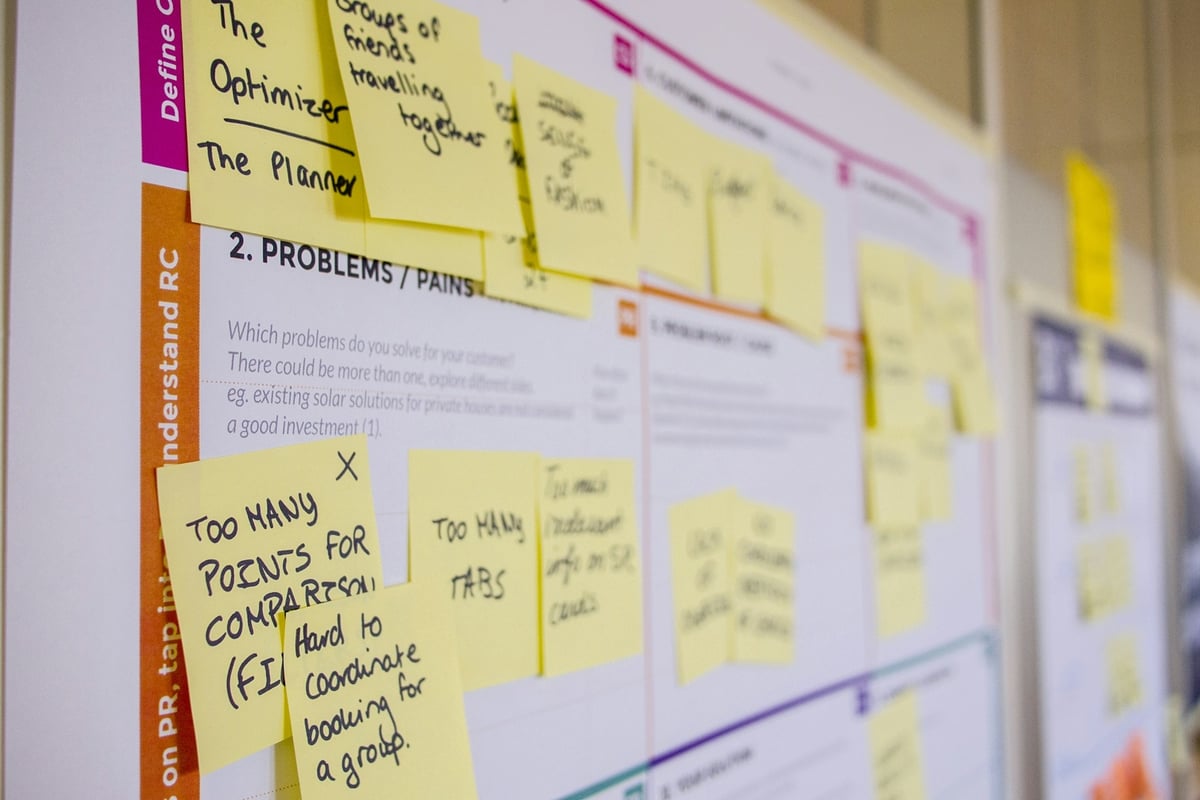Ever feel like you're juggling chainsaws while riding a unicycle when managing your tech team?
Of course, it does; leading a bunch of brilliant, quirky tech minds would always be a wild ride. We're talking about potentially some of the top talent in the world, those who can code circles around you, debate the merits of tabs vs. spaces with the passion of a thousand suns, and probably have a 3D printer in their living room.
But here's the kicker: even the most skilled tech wizards need guidance, support, and a bit of a nudge now and then. They're raw potential, like a block of marble, that can be shaped into something beautiful with the right artist at work.
That's where coaching comes in.
And no, I'm not talking about those motivational posters with eagles soaring over mountains. I'm talking about a proven approach to leadership that can transform your team from a bunch of lone wolves into a well-oiled, high-performing machine.
Coaching differs from traditional management in fostering employee engagement and motivation, emphasizing a coaching mindset over a control-oriented approach.
Don't believe me?
Studies show that 51% of companies with a strong coaching culture experience higher revenue that industry peers, and offers a staggering 221% ROI.
That's not just a few extra lines of code – that's the kind of boost that gets noticed by the higher-ups (and maybe even gets you that corner office you've been eyeing).
That's what we're talking about in this guide, so let's get into it.

Coaching is the process of guiding and training your staff through projects and day-to-day operations while creating opportunities for learning, growth, problem-solving, and both professional and personal development.
You're basically working with your team to help them have successful careers while producing better results for your company.
A short story to demonstrate.
I used to work in a cardboard box manufacturing factory when I first left school.
Here, I stood at the end of a production machine and took bundled of flat-pack boxes and put them on a pallet, would set the machine for the next job, and then run that in the same way.
The managers here were only interested in two things: maximizing output and productivity and getting as many jobs out of the door in a shift as possible.
They didn't care how that happened. Traditional management focuses on assigning tasks and closely monitoring their completion, which contrasts with the coaching approach that promotes collaboration and employee empowerment.
This created a ton of problems. Machines weren't maintained, and fixes were covered up to keep things running.
We weren't trained anymore than we needed to be, which stifled innovation and prevented some very talented people from feeling valued and working hard to achieve more (and ultimately becoming more valuable to the company itself).
People would come and go almost weekly, with churn at ridiculous rates, forcing the factory to outsource to expensive agency workers that cost thousands in extra pay per shift.
Not ideal at all.
Now, imagine if the managers had acted like better coaches here.
Imagine they had allowed staff to problem solve, be a part of the team, rather than being dictated to, and had some degree of opportunity to progress, learn more, and provide more value, rather than literally being a cog in the machine?
When you can create space for that to happen, you can achieve a level of success simply not possible via any other style of management.
Think of it like this:
See the difference? Coaching isn't about micromanaging or dictating solutions. It's about empowering your team members to find their own answers, grow their skills, and reach their full potential.

Now, you might be thinking, "Sounds great, but how does this coaching thing fit into my Agile workflow?"
Well, as it turns out, coaching and Agile are like peanut butter and jelly – a match made in productivity heaven.
Agile is all about collaboration, adaptability, and continuous improvement, and coaching is the secret sauce that makes those things happen.
Of course, transitioning from a traditional management model to a coaching model can be challenging, but it brings significant benefits such as increased support, resources, and opportunities for employee development through frequent coaching conversations.
By creating a coaching culture, you're fostering an environment where:

Okay, the benefits are clear, so let's get technical, highlighting what's actually involved in the coaching process and what leadership qualities you should be looking at. Here's a breakdown of the core skills you need to know.
Active listening is like being a detective, searching for clues in your team member's words and body language.
It's about truly hearing what they're saying (and what they're not saying) and showing them you're fully engaged. Active listening is a crucial part of emotional intelligence, which plays a significant role in effective coaching by fostering trust and understanding.
Here's how to level up your listening game:
Think of yourself as Socrates, the master of inquiry. Asking powerful questions fosters a growth mindset within the team by encouraging a developmental process that empowers individuals and enhances decision-making.
Instead of providing answers, ask open-ended questions that spark deeper thinking and problem-solving. This helps your employees feel accountable and therefore have ownership and credibility to their decisions, rather than just doing what they were told.
Here are some question starters to get you going:
Feedback is like a software update for your team – it helps them identify bugs and improve their performance. Effective coaches use feedback to guide employees toward personal development and achieving collaborative goals.
But delivering feedback that's actually helpful (and not soul-crushing) is an art form.
Here's the golden rule: Be specific, focus on behaviors, and offer actionable suggestions to challenges.
Remember, feedback is a two-way street. Be open to receiving feedback from your team, too – it's a valuable opportunity for growth.
Your team members are like rare Pokémon – they have unique strengths and weaknesses. Leadership development plays a crucial role in facilitating their growth by providing ongoing training, consistent feedback, and fostering a strength-based culture.
Your job as a coach is to help them evolve and become even more powerful.
Here's how you can foster growth:
By mastering these core coaching skills, you'll be well on your way to becoming a tech team superhero. But coaching isn't just about individual interactions – it's about creating a culture where everyone feels supported, empowered, and excited to grow.

Alright, now that you've sharpened your coaching skills, it's time to create a coaching culture that your tech team will actually embrace.
It's one thing being the best coach in the business, but if you can't get your team onboard and working with you, it simply won't work.
This requires a managers shift from traditional top-down management to a coaching mindset, emphasizing empowerment and collaboration. This isn't about fancy perks or gimmicks – it's about fostering an environment where people feel safe, supported, and empowered to grow.
Think of your team like a group of superheroes – they all have incredible powers but also have vulnerabilities. Good managers are essential in creating a safe and supportive environment for their teams.
Your job is to create a safe space where they can let their guard down and share their challenges without fear of judgment or ridicule.
Here's how you can build that trust:
In tech, failure isn't a dirty word – it's a learning opportunity. A people-centric approach, as opposed to a task-oriented approach, can promote psychological safety by focusing on individual needs and active listening.
But to truly innovate, your team needs to feel safe enough to experiment, take risks, and even make mistakes.
Here's how to create that psychological safety net:
You can't expect your team to embrace a coaching culture if you're not practicing what you preach.
Training managers to adopt a coaching mindset is crucial, as it equips them with essential skills like listening and emotional intelligence, leading to improved communication and productivity within teams.
Be the change you want to see, and model the coaching behaviors you're trying to instill.
Here are some ways to lead by example:
Coaching shouldn't be an afterthought or a once-a-year performance review. Integrating a coaching model into daily team processes is crucial for fostering continuous development and support. Weave it into the fabric of your team's daily work.
Here are some ideas:
Remember, building a coaching culture takes time, effort, and commitment. But the payoff is worth it – a team that's engaged, empowered, and firing on all cylinders. And who wouldn't want that?

Now, here's the thing: coaching isn't a one-size-fits-all kind of deal. Just like your tech team has a diverse range of roles and personalities, your coaching approach needs to be tailored to fit each individual and situation.
Effective coaching is crucial in addressing the unique needs of different roles, enhancing leadership qualities, and driving organizational growth.
Engineers are the masterminds behind your tech products, bringing your ideas to life. Adopting a coaching model can foster innovation and problem-solving by providing increased support, resources, and opportunities for development through frequent coaching conversations.
But even the most brilliant coder can get stuck in a rut or face a challenge that seems insurmountable.
Here's how to coach them to greatness:
Designers are the visual storytellers, the ones who create intuitive, user-friendly interfaces that delight your customers. Understanding and valuing their creative vision requires emotional intelligence, as it helps in recognizing their feelings and fostering a supportive environment.
But they can also get bogged down by conflicting opinions or struggle to balance aesthetics with functionality.
Here's how to coach them to unleash their creative genius:
Product managers are the glue that holds everything together, balancing the needs of customers, stakeholders, and the development team.
Leadership development plays a crucial role in enhancing their effectiveness by providing ongoing training, consistent feedback, and fostering a strength-based culture.
But they can also get overwhelmed by competing priorities or struggle to communicate their vision effectively.
Here's how to coach them to become product management rockstars:
Agile ceremonies, like daily stand-ups, sprint planning, and retrospectives, are more than just meetings – they're coaching opportunities in disguise.
Effective coaches play a crucial role in these ceremonies by guiding employees toward personal development and achieving collaborative goals. Use these moments to:
By tailoring your coaching approach to different roles and scenarios, you'll be able to unlock the full potential of your team and create a culture of continuous growth and improvement.
Agile coaching: It's not just a buzzword, it's the secret weapon to unlock your team's full potential. But let's be honest – this isn't just about feeling good. It's about seeing real results.
When you embrace a coaching mindset and put these strategies to work, you'll see your team's performance skyrocket. You'll attract the best talent, spark innovation, build a rock-solid team, and even level up your own leadership game.
Forget that dusty old management playbook and start putting those skills into action; create a coaching culture your team will love, and tailor your approach for different situations. Train managers to adopt a coaching mindset that empowers employees and fosters a growth-oriented culture.
Need some help getting started?
The expert coaches at Mentorcruise.com can help you refine your coaching skills, build a thriving team culture, and unlock the full potential of your tech team. Don't just manage your team; coach them to greatness with Mentorcruise.com.
Find out if MentorCruise is a good fit for you – fast, free, and no pressure.
Tell us about your goals
See how mentorship compares to other options
Preview your first month
